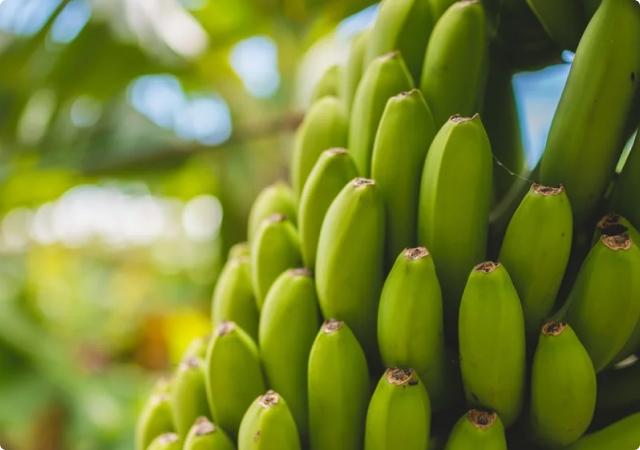

Banana plantation
As food, bananas are cultivated in the tropics – approximately between 30°nl. and 30°sl, at an altitude of up to 2000m above sea level.
The most favorable conditions for plant growth are temperatures from 26 to 35°C during the day and from 22 to 28°C at night. At temperatures below 16°C, growth slows down significantly, and at 10°C it completely stops. Only a few varieties such as “Rajapuri” are able to withstand low temperatures around 0°C. The height above sea level at which plants take root depends on latitude – usually it does not exceed 920m, although on the Hawaiian island of Maui they grow at an altitude of up to 1000m, and in New Guinea – up to 2000m above sea level.
Of great importance for the cultivation of these fruits is also a certain humidity regime – the dry season should not last more than 3 months a year, and the average rainfall should be at least 100 mm per month. Therefore, the cultivation of bananas is possible only in desert climate.
Fruit transportation
In case of a short cold snap, banana plantations are tried to be heated – they are flooded with water or fumigated with smoke. Many crops are susceptible to strong winds – the shallow root system is unable to hold the plant in place, and only the leaves tearing along the veins reduce the pressure on it. Commercial cultivation requires well-drained, preferably acidic soil. In soil that is not rich in minerals, plants with good care will also grow, but in this case, their cultivation may become economically unprofitable. The yield of fruits can reach up to 400 centners per hectare annually.
The period of full maturation of fruits starting from planting usually takes 10-12 months and for some varieties 17-19 months. For plantations both fertile lands in river valleys and flat areas and hillsides are chosen. If the land is not subject to erosion it is well plowed before planting. Reproduction is mainly vegetative rarely by seeds. As a rule planting is done before or at the beginning of the rainy season – in this case, the seedlings receive the amount of moisture they need. Planting density varies widely and depends on many factors – for example, denser planting improves wind resistance, but increases susceptibility to disease. In general from 600 to 4400 plants can fit on one hectare.
During growth, plantations are carefully weeded – a variety of methods are used to control weeds, such as the use of herbicides, mulching (covering the roots) with dry banana leaves, and even the use of geese, which willingly eat some weeds, while not touching bananas. If the soils are not fertile enough, then they are actively fertilized; the composition of minerals used for dressing depends on each specific case – it can be nitrogen, potassium or phosphorus.
In Russia bananas grow in the Sochi vicinity but the fruits do not ripen to a state of suitability for food as the temperature in winter is below zero and the ripening period is very long. In winter the plant mostly dies, and with the onset of warm days it is restored again. Some types of bananas are grown primarily as ornamental plants.